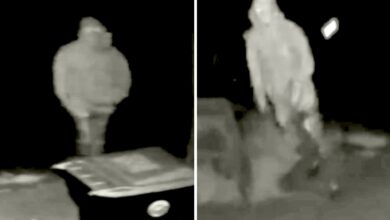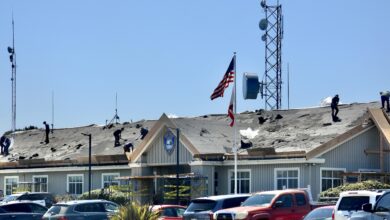Ab poachers may like MLPA”s closed areas
Sharp-eyed Department of Fish and Game wardens used my last article about the Marine Life Protection Act Initiative to catch abalone poachers right where I bumped into them while walking my dogs.
The wardens recognized the modus operandi from my description of a lookout and several guys in the water, went back to where I had seen them and waited. The result was the arrest of three Central Valley men, who have previous arrests for abalone poaching. DFG also seized 45 abalone.
Two weeks ago, I reported my frustration with those poachers and the disconnected DFG tip line. Dennis McKiver, who leads the local crew of five DFG wardens, took me through the capture of the three men, in which the poachers became the hunted in an operation that would have made a thrilling “CSI” episode.
While I chose to leave out most of the details so as not to help other poachers, it involved a very sophisticated crew, caught waiting in the bushes at 11 p.m. by wardens wearing night vision goggles.
However, my fun was dampened when I learned of mistakes and wrong assumptions I had made in my short career as informant. I couldn”t provide any identification, having failed to write down what I saw.
Those alleged poachers we started with, arrested on Aug. 12, included Randy Appleyard, 25, who is under a lifetime fishing ban and is on probation that does not allow him to be on the coast, McKiver said.
Also arrested was fellow diver Christopher Kern, 27, of Orangevale, who had an outstanding warrant for the same abalone charges, dating from an arrest at the Little River blowhole just three weeks earlier. Those two were allegedly caught with the abalone.
Fish and Game officers then waited with the pair until the alleged lookout-driver drove up. At that point, Philip Horch, 26, of Fair Oaks, was arrested. He also had been arrested in connection with the case earlier this summer.
After I saw the poachers, I spent 15 minutes calling the DFG 24-hour hotline, which I assumed had been turned off due to budget concerns. I tried every possible combination of prompts and calls before giving up.
McKiver said that I should have at least gotten a chance to leave a message. It was after 8 p.m. and dark so I gave up, figuring they had already left.
But that assumption was my first mistake. Poachers will often hide abalone, go somewhere to kill time, and return when they figure it”s late enough to dodge DFG wardens. If I had called and reported a lookout and diving in an area where no car was parked, wardens would likely have caught the crew later that night.
Another mistake I made was not following basic guidelines for helping law enforcement catch criminals. I didn”t write down height, weight, clothes, or the kind of bags they were using. By the time we talked, I had forgotten. I don”t trust my own facial identification skills enough to do a lineup.
McKiver said the Mendocino Abalone Watch (MAW), the new group set up to help DFG catch poachers, is providing training that can make people like me better at reporting crimes against the ocean. McKiver said specific information, such as physical details, time, place and license numbers are needed. Often tips simply report a group of people, especially Asians, enjoying the ocean. That”s not enough information to prompt a DFG response.
Those interested in helping can write abalonewatch@gmail.com to volunteer. Otherwise, to report poachers, call DFG dispatch at 916-445-0380 or the tip hotline at 1-888-334-2258, or the county sheriff”s dispatch number. McKiver said NOT to call 911.
Ironically, the success of locally-driven efforts, combined with the destruction of abalone populations in Southern California as well in much of the rest of the world, is what draws poachers here to take a mollusk that can sell for as much as $75 per pound.
About 310,000 abalone were reported on abalone cards that were turned in, DFG scientist Pete Kalvass said. Twenty percent of those were landed at Fort Ross, he said.
DFG estimates poachers can add 25 percent to the legal take, which takes place from Marin County to Shelter Cove. (Abalone are legal but not prevalent north of Cape Mendocino.)
There is profit in poaching, which figures to get more lucrative and more common when new protected areas are identified, backers concede. Protected areas would have more abalone to poach, with no fishermen watching. But law enforcement is being cut at the same time as the Marine Life Protection Act Initiative is being pushed.
Furlough days mean the effective loss of one of the five warden positions on the coast. For those reasons, the game wardens” union has opposed implementation of the MLPAI until enforcement dollars can be identified.
Meanwhile, poachers who can escape local wardens get high prices from restaurants, which are not allowed to sell the big black sea snails.
McKiver told me about a band of poachers who always rents different cars to escape detection. Their latest move was to use a high-end rental designed to make them blend in with well-heeled tourists.
The Seafood Choices Alliance Website estimates that one-third of the abalone traded in the world today are caught illegally. China is the world”s largest producer and consumer of abalone. The United States takes only a bit over 1 percent of what the world consumes.




